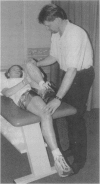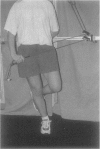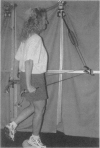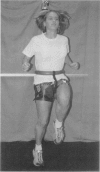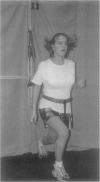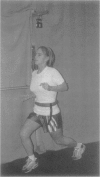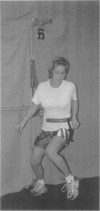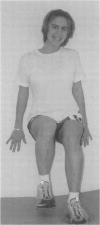Abstract
Objective:
To demonstrate the response to a proprioceptive training model during a 1-week rehabilitation regime. The techniques were demonstrated on a college-aged female basketball player who had injured her anterior cruciate ligament (ACL) several weeks earlier. The athlete was tested, trained, and then retested during her semester break.
Background:
The ACL injury has become a fairly common occurrence in the world of athletics. Knowing this, the athletic trainer is constantly searching for ways to improve the rehabilitative process. New research demonstrates that rehabilitation should be based on proprioception. The ACL not only serves a mechanical role by limiting passive knee mobility but also serves a sensory role through the mechanoreceptors deep in its tissue, which communicate with the neuromuscular system to provide proprioceptive feedback during training and competition.
Differential Diagnosis:
Partial or complete tear of the ACL.
Treatment:
The athlete was treated with a rehabilitation protocol based on proprioception, which uses reactive neuromuscular training.
Uniqueness:
Our rehabilitation focused on the muscular imbalances about the hip, knee, and ankle. The athlete achieved dramatic decreases in muscular imbalances about the hip and knee in only 1 week of rehabilitation through reactive neuromuscular training.
Conclusions:
The athlete had significant gains in strength over her brief period of therapy. However, these gains can be viewed only as neuromuscular changes and not strictly as gains in strength. The athlete returned to postseason competition under the supervision of her surgeon, who later recommended surgical reconstruction at the completion of the basketball season with rehabilitation during the offseason.
Keywords: oscillating technique for isometric stabilization, impulse technique for isometric stabilization
Full text
PDF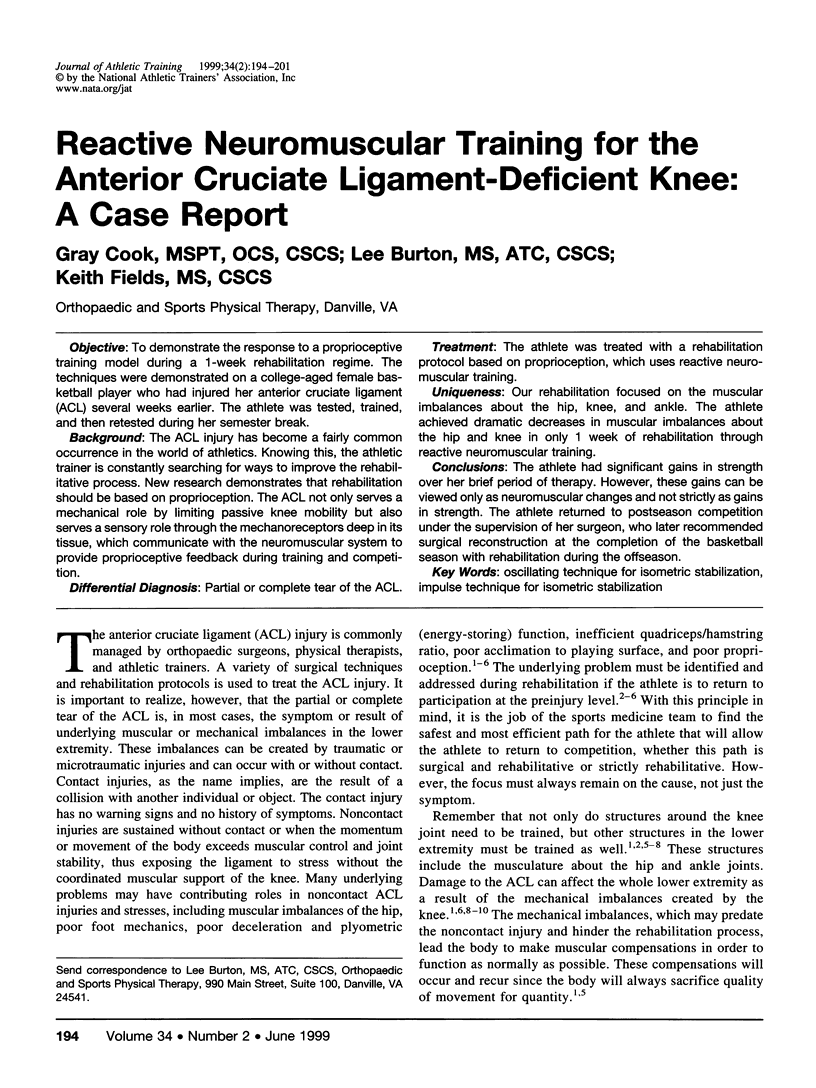


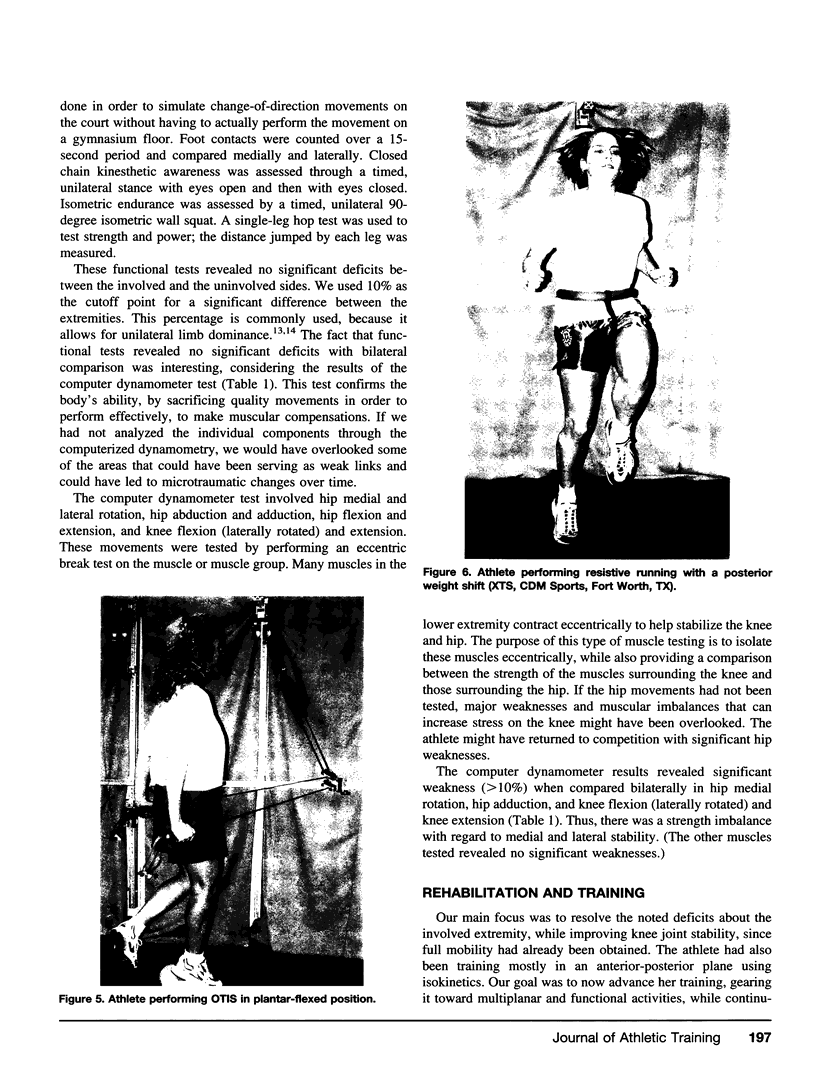
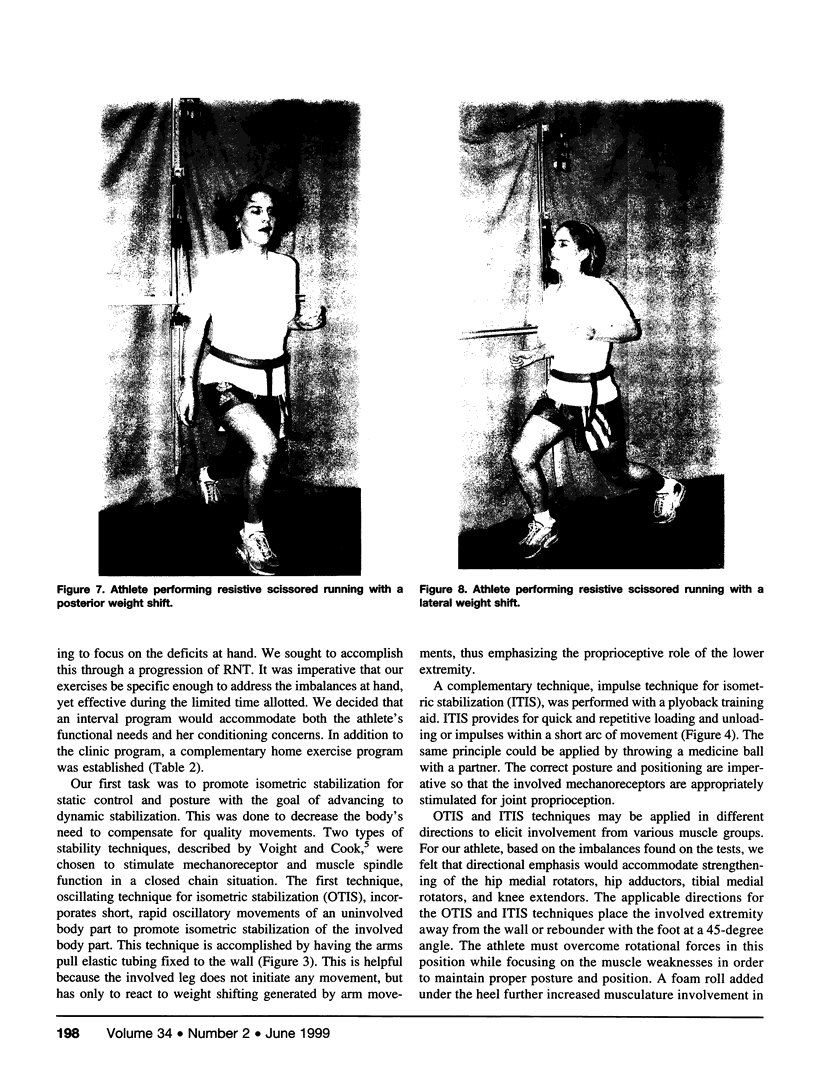
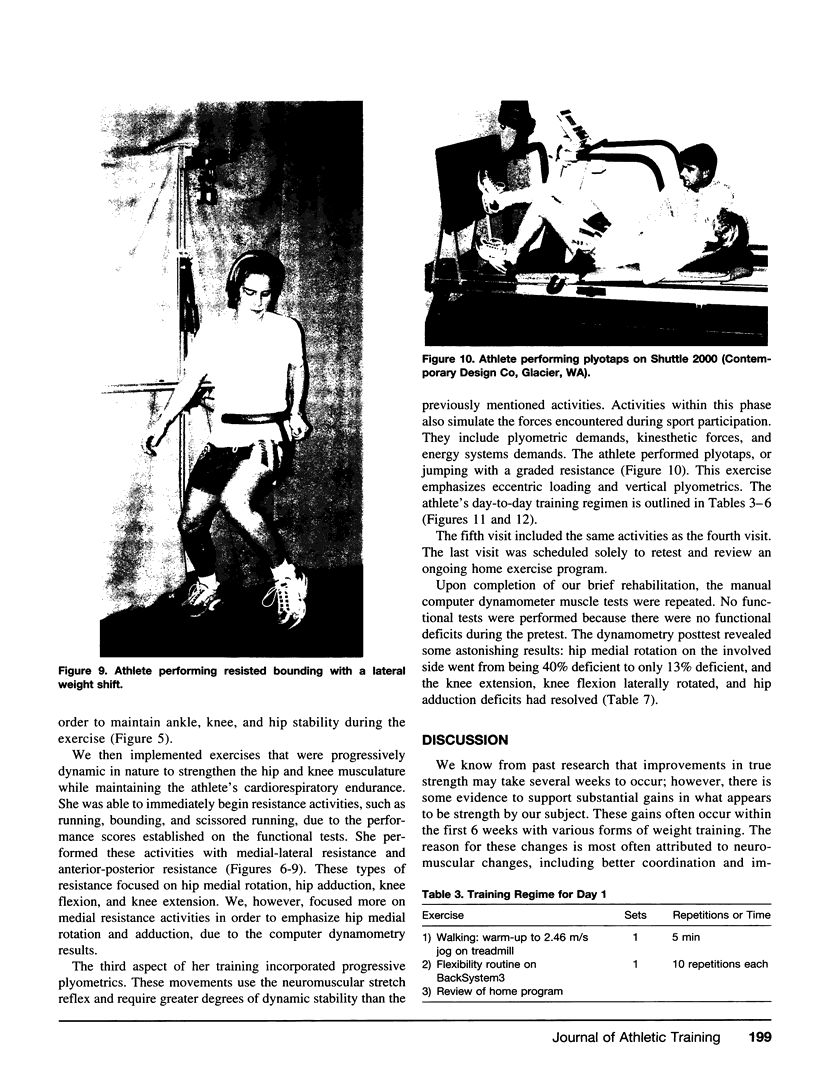
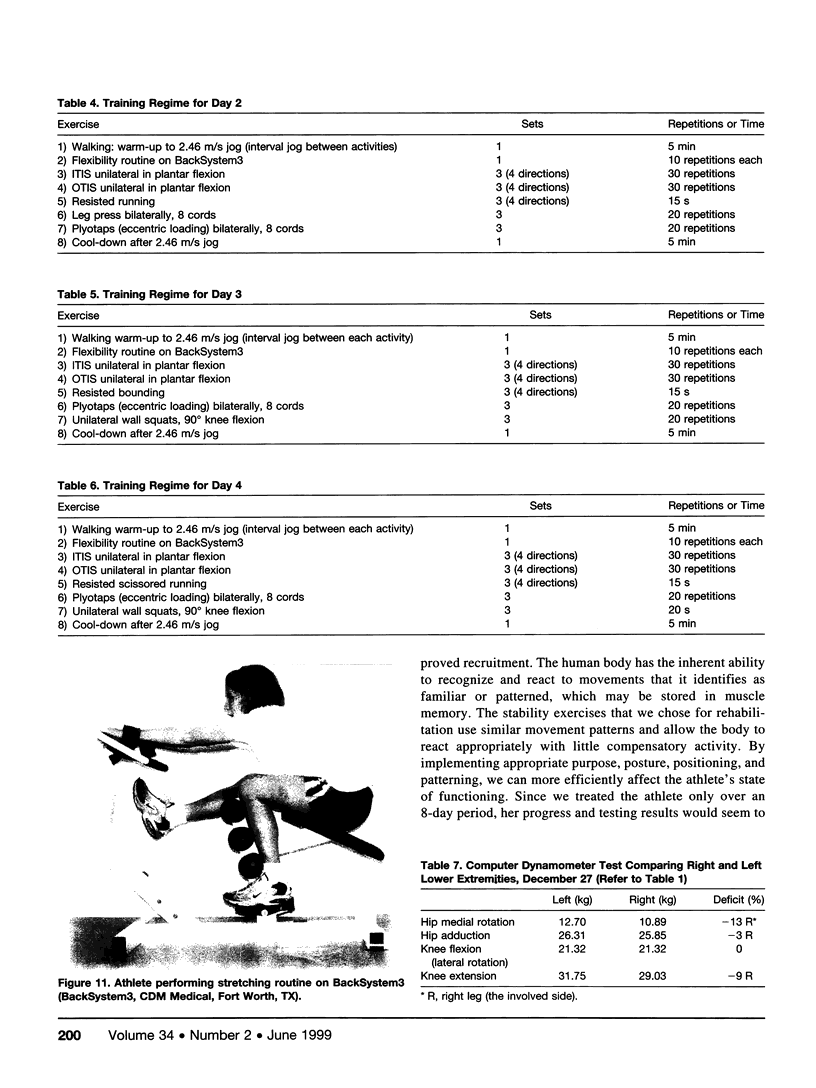
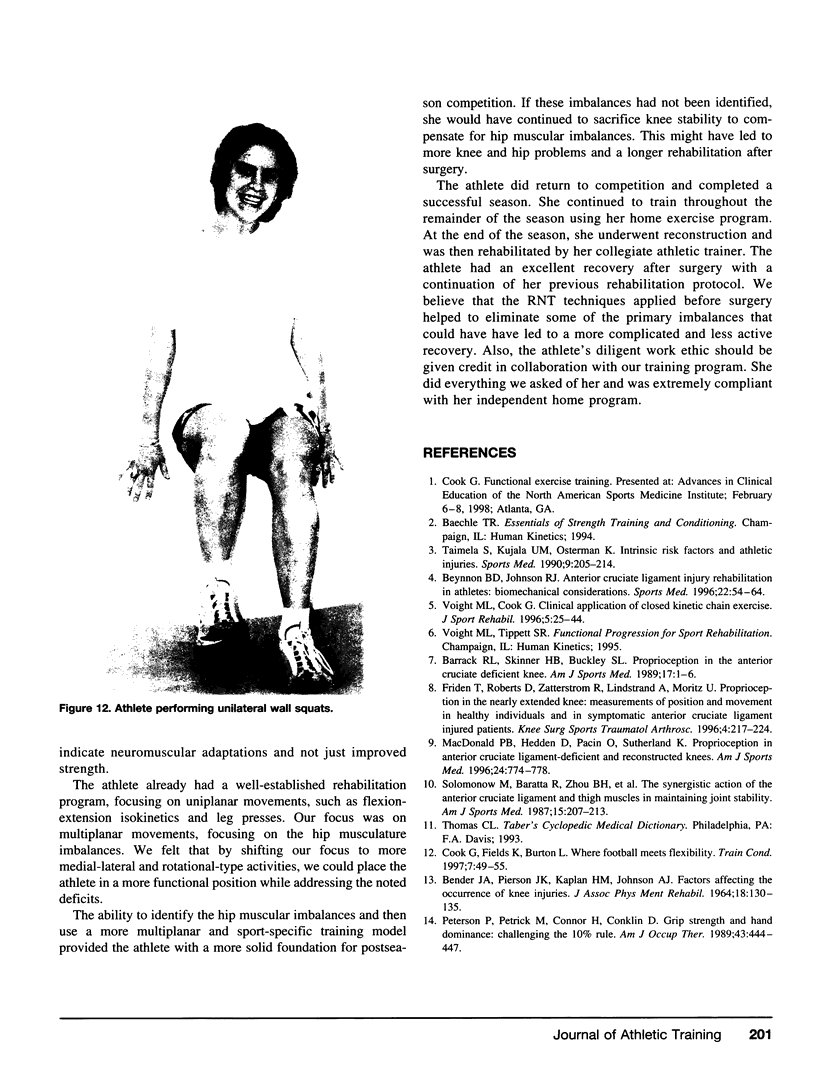
Images in this article
Selected References
These references are in PubMed. This may not be the complete list of references from this article.
- BENDER J. A., PIERSON J. K., KAPLAN H. M., JOHNSON A. J. FACTORS AFFECTING THE OCCURRENCE OF KNEE INJURIES. J Assoc Phys Ment Rehabil. 1964 Sep-Oct;18:130–134. [PubMed] [Google Scholar]
- Barrack R. L., Skinner H. B., Buckley S. L. Proprioception in the anterior cruciate deficient knee. Am J Sports Med. 1989 Jan-Feb;17(1):1–6. doi: 10.1177/036354658901700101. [DOI] [PubMed] [Google Scholar]
- Beynnon B. D., Johnson R. J. Anterior cruciate ligament injury rehabilitation in athletes. Biomechanical considerations. Sports Med. 1996 Jul;22(1):54–64. doi: 10.2165/00007256-199622010-00005. [DOI] [PubMed] [Google Scholar]
- Fridén T., Roberts D., Zätterström R., Lindstrand A., Moritz U. Proprioception in the nearly extended knee. Measurements of position and movement in healthy individuals and in symptomatic anterior cruciate ligament injured patients. Knee Surg Sports Traumatol Arthrosc. 1996;4(4):217–224. doi: 10.1007/BF01567966. [DOI] [PubMed] [Google Scholar]
- MacDonald P. B., Hedden D., Pacin O., Sutherland K. Proprioception in anterior cruciate ligament-deficient and reconstructed knees. Am J Sports Med. 1996 Nov-Dec;24(6):774–778. doi: 10.1177/036354659602400612. [DOI] [PubMed] [Google Scholar]
- Petersen P., Petrick M., Connor H., Conklin D. Grip strength and hand dominance: challenging the 10% rule. Am J Occup Ther. 1989 Jul;43(7):444–447. doi: 10.5014/ajot.43.7.444. [DOI] [PubMed] [Google Scholar]
- Solomonow M., Baratta R., Zhou B. H., Shoji H., Bose W., Beck C., D'Ambrosia R. The synergistic action of the anterior cruciate ligament and thigh muscles in maintaining joint stability. Am J Sports Med. 1987 May-Jun;15(3):207–213. doi: 10.1177/036354658701500302. [DOI] [PubMed] [Google Scholar]
- Taimela S., Kujala U. M., Osterman K. Intrinsic risk factors and athletic injuries. Sports Med. 1990 Apr;9(4):205–215. doi: 10.2165/00007256-199009040-00002. [DOI] [PubMed] [Google Scholar]




